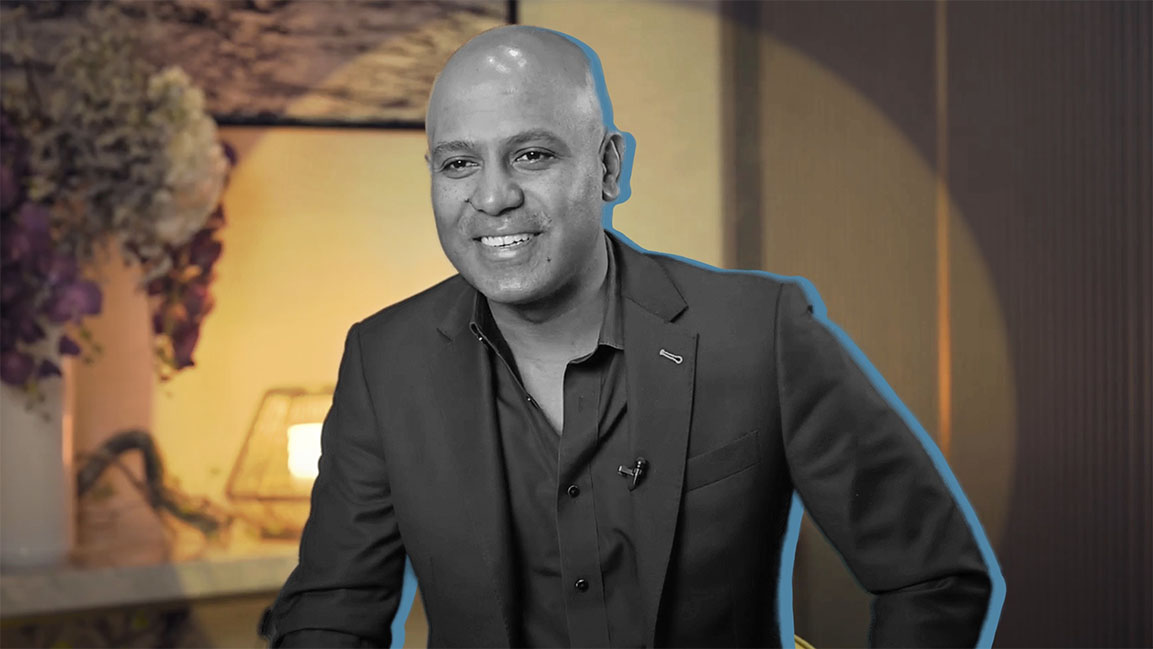- | 9:00 am
How can brands retain customer loyalty? Put humans at the center of marketing, says Ragy Thomas
A human-centered approach is bound to pay off, says Ragy Thomas, founder and CEO of Sprinklr, because there's no alternative

People receive countless marketing messages, and after a point, all seem like noise. So how can brands stay ahead of customers’ expectations? Focus on three things: reach, engage and listen across all customer touchpoints.
“The priority should be ‘how to meet customers’ expectations,” says Ragy Thomas, founder and CEO of Sprinklr, a New-York based unified customer experience management (CXM) platform. “Today’s customers expect brands to be where they are, listen to what they’re saying, and work across channels, markets and businesses.”
THE IMPORTANCE OF UNIFIED CUSTOMER EXPERIENCE MANAGEMENT
According to reports, despite businesses amping up branding and marketing activities, 60% of customers state that their experiences with brands have remained the same or worsened in a post-COVID world. So how can brands have the edge over the competition and provide superior CX to customers? Investing in a unified customer experience is the answer, says Thomas.
WATCH THE INTERVIEW HERE:
Defining unified customer experience management (unified-CXM) as “the ability to manage all operations and experiences holistically,” Thomas says, “Unified-CXM allows teams to collaborate with the shared context of a customer and how they engage with brands, campaigns, and content.”
A key benefit of a unified approach is removing silos across channels and functions that persist, especially at the enterprise level. Internal alignment helps ensure “customers are put first” and that’s how you will differentiate your brand in the marketplace”.
BRIDGING THE GAP
There are two main challenges that marketers need to consider, says Thomas, “Coordinating external communication and marketing across digital channels in a unified way – running a truly ‘omnichannel’ campaign; coordinating your internal teams across business units, markets, and customer-facing functions to communicate seamlessly with customers to avoid and eliminate issues like advertising to unhappy customers, or those who have just purchased a product.”
“These challenges can be solved if brands learn to put humans at the center of marketing,” says Thomas.
According to Thomas, a key enabling technology to reach higher levels of personalization, and eliminate awkward, unnecessary, or even unwanted communications is the ability to listen to customers.
“You can’t be tone-deaf when there are petabytes of information consumers are putting out about themselves. How do you respect customer preferences? And how do you work across different customer-facing teams to orchestrate better communication with your customers?”
A human-centered approach is bound to pay off “because there’s no alternative,” says Thomas, adding that brands that deliver human experiences will beat brands that cannot provide human experiences.
“Whether in B2B or B2C, you’re talking to a human being. Consumers today are participants in marketing because they are talking about your brand whether you like it or you don’t. And if you aren’t dealing with them as a human across all the channels, that will come across as impersonal, and someone who can do that will have the edge over you.”
BUILDING A DIGITAL FRONT DOOR
Sprinklr has four major product suites – Sprinklr Modern Care (for customer service), Sprinklr Modern Research, Sprinklr Social Media Engagement and Sales, and Sprinklr Modern Marketing and Advertising.
“The differentiation is that all of these suites are on one unified platform. Around the world, across all your business units and functions, you’re deploying one platform to have workflows between them. You can have omnichannel experiences in each function for that customer.”
The Sprinklr roadmap involves adding on in all the channels. Customer service supports text, email, social media, and messaging. “We’ve expanded our contact center products to include voice,” he says. “Our roadmap includes expanding to all channels, unifying them, and applying artificial intelligence to do everything a human can’t get to do.”
“There is an always-on, always-open digital front door for your company. Organizations need an AI-powered virtual agent manning this door to understand all the common requests and deal with 30%-95% of those requests automatically. When an automated tool can’t resolve an issue, it can connect the digital consumer to the right person within the company with all relevant context to help resolve issues or make a sale quickly. With technology, organizations can both humanize the brand and be accessible 24/7 on all channels.”
THE FUTURE OF CONTACT CENTERS
Over the last decade, contact centers have remained essential touchpoints for dynamic customer engagement. What has changed is how companies organize processes and people to deliver gratifying customer experiences.
Thomas says contact centers today are primarily voice-based. “They are reactive,” he says, adding that most companies look at contact centers as “cost centers.”
“Contact centers of the future are open digital doors. When someone walks in, they can connect with you across any channel, not restricted by phone.”
In the future, he says, contact centers will enable businesses to pick up when people speak about them or their competitors. “And if it’s negative, that’s an issue you can proactively resolve”.
Citing an example of someone calling to complain about an iPhone 7 being a great candidate to sell an iPhone 14 through the contact center, he says By bringing all customer-facing teams together in a contact center, a business can sell when appropriate. “The contact center of the future is omnichannel and proactive; it could be a revenue center for your company,” Thomas adds.
Despite the possibilities of the future, Thomas says, “A great unified-CXM strategy starts with a mindset. You must align your executive team with switching from brand-centric to customer-centric thinking. Next, you must align your teams to work across silos and put the customer first. Then, develop the processes, and lastly, put together the technology.”








































